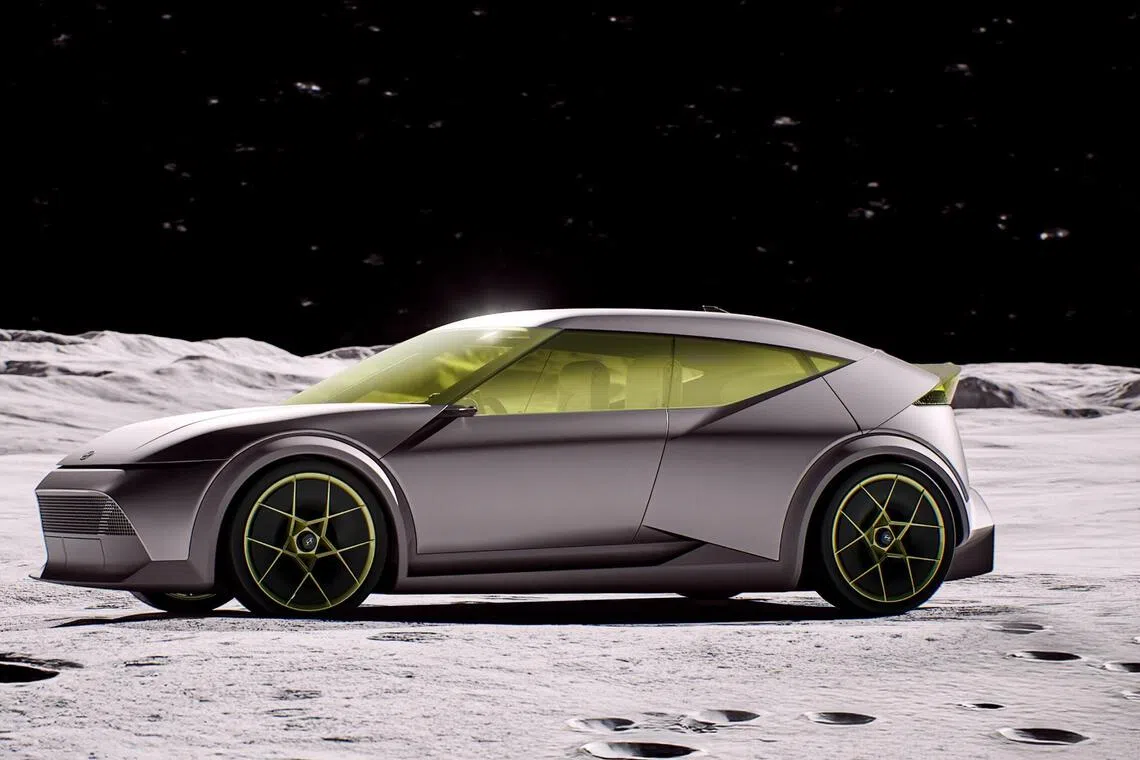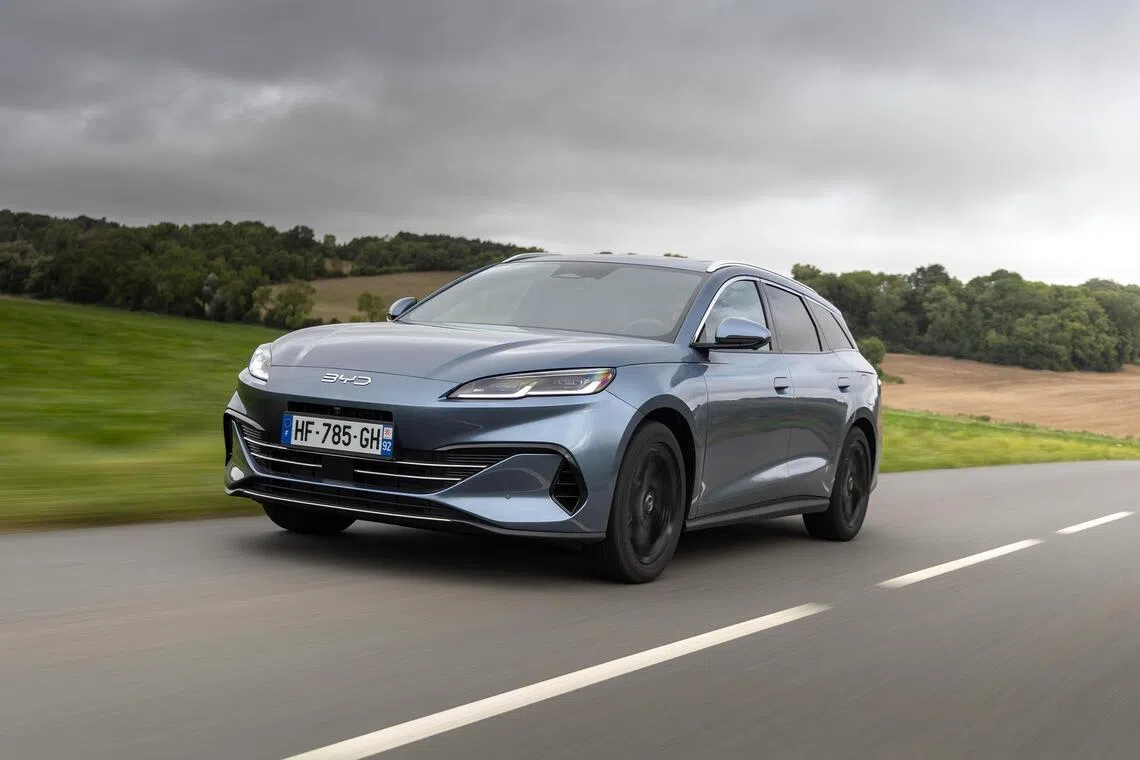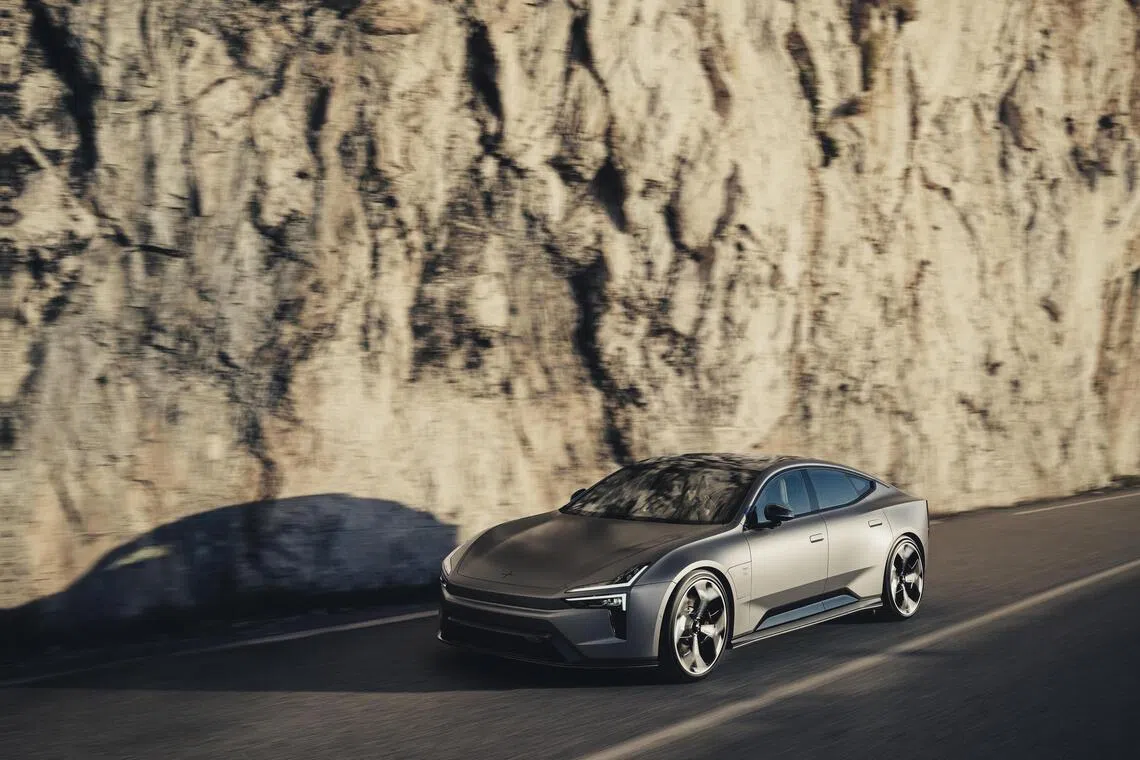Fast Lane: Hyundai unveils Ioniq 3, BMW and Mercedes-Benz have new grilles, BYD to produce in Hungary
Sign up now: Get ST's newsletters delivered to your inbox

The Hyundai Ioniq 3 expands the Korean carmaker's range of EVs.
PHOTO: HYUNDAI
Follow topic:
Hyundai’s next Ioniq
The next model in Hyundai’s Ioniq electric car line-up is the 3. Unveiled in concept form at the IAA Mobility show in Munich on Sept 9, the wild-looking compact hatchback showcases Hyundai’s new design language.
It measures 4,287mm long and 1,940mm wide, which is as long as the MG EV4, but some 100mm wider. This gives the car a muscular stance.
The production version, expected to be out in 2026, may lose some of the show car’s flamboyant design touches – like the yellow-tinted windows – and gain regular door handles.
Second-generation BMW iX3 to feature new design language

The BMW iX3 introduces a range of new technologies and a new look for the German brand.
PHOTO: BMW
The second-generation BMW iX3 is the first to feature the German brand’s fresh design language.
The brand’s signature kidney grille is almost uncharacteristically small compared with the ones on the current range of BMWs. The narrow design references the brand’s models from the 1960s and 1970s.
Just as crucially, the iX3 is the first model to use a new generation of technologies, which is a change from the existing models.
Among the key differences is the charging speed. At its peak, the iX3’s battery can gain more than 370km of operating range in 10 minutes. Fully charged, the electric sport utility vehicle (SUV) has a range of more than 800km.
Return of upright radiator grille in Mercedes-Benz GLC

Future Mercedes-Benz cars will see the return of the upright radiator grille that debuted on the new GLC.
PHOTO: MERCEDES-BENZ
Mercedes-Benz is also refreshing its design and technology, and it has opted to debut the innovations on its mid-sized SUV model.
The latest electric GLC looks distinctively retro with the upright and exaggeratedly large, illuminated chrome grille – reminiscent of the radiator grille from classic Mercedes-Benz models.
Technical highlights include the GLC400 version being able to travel 713km on a single charge.
The electric SUV also features the latest version of the brand’s digital interface. The cabin has a 993mm-wide screen, which is the largest yet to be used in a Mercedes-Benz.
Compared with the current GLC, the new car’s cabin has 13mm more legroom in front and 47mm more for passengers sitting in the back.
BYD making cars in Europe

BYD’s first estate model is a plug-in hybrid that is said to be able to travel up to 1,350km before needing to be refuelled and recharged.
PHOTO: BYD
The BYD Seal 6 DM-i Touring is the Chinese EV brand’s first estate car and its second plug-in hybrid model after the Sealion 6 DM-i.
Powered by a 1.5-litre engine and an electric motor, the car has a claimed maximum range of 1,350km on a full tank of petrol and with the battery fully charged.
At the model’s European launch, held at the motor show in Munich, BYD announced that it will start producing cars in a new factory in Hungary by the end of 2025.
Swedish EV without rear windscreen

The Polestar 5 is a high-end electric grand tourer that aims to take on German sports cars.
PHOTO: POLESTAR
Stretching from the top of the front windscreen, the Polestar 5’s panoramic glass roof is over 2m long, but it stops short of extending to the rear of the car to allow occupants to look out.
Instead, the new electric grand tourer from the Swedish brand has an opaque flat surface where a glass windscreen will normally be.
This means that the driver has to rely on a digital rear-view mirror when reversing the car or to watch out for traffic closing in.
True to the 2020 concept car that it was based on, the Polestar 5 is the second model after the 4 to have this unusual trait. It is the most premium Polestar model yet, being pitched at the likes of the Porsche Taycan.
To match its high-end electric rivals for pace, the dual-motor Polestar 5 has up to 650kW and 1,015Nm of torque in the Performance version, enough to get from 0-100kmh in 3.1 seconds.
The car is the first Polestar model to use an 800V electrical architecture, enabling it to be charged at up to 350kW.


